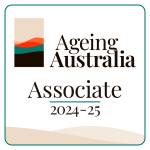AHPRA Fast-Tracks Overseas Nurse Registration: 2025 Updates

AHPRA’s 2025 Updates: Streamlining International Nursing Registration in Australia
In an era of global healthcare challenges and workforce shortages, Australia has taken a significant step forward in addressing its nursing needs. The Australian Health Practitioner Regulation Agency (AHPRA) has introduced groundbreaking updates to its registration process for overseas nurses, set to take effect in 2025. These changes promise to revolutionize the landscape of international nursing registration in Australia, offering a streamlined pathway for qualified professionals from select developed countries. This article delves into the intricacies of these updates, their impact on the healthcare workforce, and what it means for both international nurses and the Australian healthcare system.
The Changing Landscape of International Nursing Registration
Australia, like many countries worldwide, has long grappled with nursing shortages. The COVID-19 pandemic exacerbated this issue, highlighting the critical need for skilled healthcare professionals. In response, AHPRA has developed a streamlined registration process that aims to expedite the entry of qualified overseas nurses into the Australian workforce.
This new pathway, set to launch in 2025, represents a significant shift from the traditional, often lengthy and complex registration process. By simplifying procedures and reducing wait times, AHPRA aims to attract more international talent while maintaining the high standards of care that Australian patients expect and deserve.
Background and Context
Historical Challenges in Overseas Nurse Registration
Historically, the process for overseas nurses to gain registration in Australia has been fraught with challenges. Applicants often faced:
- Long wait times, sometimes extending to several months or even years
- Complex documentation requirements
- Additional examinations and qualification assessments
- Significant financial burdens associated with the application process
These hurdles not only deterred many qualified professionals from applying but also created bottlenecks in addressing urgent workforce needs across various healthcare settings.
The Need for Reform
The need for reform became increasingly apparent as Australia’s healthcare system faced mounting pressures. Factors contributing to this need included:
- An aging population requiring more intensive healthcare services
- Increased demand for healthcare services across all sectors
- Shortages in rural and remote areas
- The strain on the healthcare system due to the COVID-19 pandemic
According to recent statistics, in the past financial year alone, 16,622 internationally qualified nurses registered to practice in Australia. This figure is nearly three times higher than the 5,610 nurses registered in the final year before COVID (2018/19), underscoring the growing reliance on international talent to meet healthcare demands.
Development of the Streamlined Pathway
The streamlined pathway is a result of comprehensive research and recommendations from the Final Report of the Independent Review of Australia’s Regulatory Settings Relating to Overseas Health Practitioners. This initiative is part of a broader $90 million allocation in the 2024-25 Budget aimed at implementing the recommendations of the Kruk Review, which sought to make the process of working in Australia simpler, quicker, and more cost-effective for internationally qualified health practitioners.
Key Updates to AHPRA Registration Process
The 2025 updates to AHPRA’s registration process for overseas nurses bring several significant changes that promise to reshape the landscape of international nursing in Australia.
Eligible Countries and Qualifications
The streamlined pathway is currently open to nurses from the following countries:
- United Kingdom
- Ireland
- United States
- Singapore
- Spain
- Canada (specifically British Columbia and Ontario)
To be eligible, nurses must have completed a minimum of 1,800 practice hours since 2017 in these NMBA-approved comparable jurisdictions. This requirement ensures that applicants have recent and relevant clinical experience.
Removal of Additional Examinations
One of the most significant changes is the removal of additional examinations for eligible applicants. Previously, many overseas nurses were required to undertake further assessments or upgrade their qualifications to meet Australian standards. Under the new system, nurses from the specified countries who meet the criteria will not need to sit additional exams, recognizing the equivalence of their qualifications and experience.
Reduced Application Times
The streamlined process is designed to significantly reduce application times. According to AHPRA, the new pathway could shorten the registration process by up to 6-12 months compared to the traditional method. This reduction in processing time is a game-changer for both applicants and the Australian healthcare system, allowing qualified nurses to enter the workforce much more quickly.
Simplified Documentation Requirements
While specific documentation will still be necessary, the streamlined pathway aims to simplify these requirements. Applicants will need to provide:
- Proof of identity
- Evidence of their nursing qualification
- Proof of registration in their home country
- Evidence of the required practice hours
The reduction in paperwork and administrative burden is expected to make the application process more accessible and less daunting for overseas nurses.
Impact on Overseas Nurses
The introduction of the streamlined pathway is set to have a profound impact on overseas nurses considering a move to Australia.
Faster Entry into Australian Workforce
The most immediate benefit for overseas nurses is the significantly reduced wait time. With processing times potentially shortened by up to a year, nurses can transition into the Australian healthcare system much more quickly. This rapid entry not only benefits the nurses themselves but also addresses critical workforce shortages more effectively.
Reduced Administrative Burden
The simplified documentation requirements and removal of additional examinations considerably reduce the administrative burden on applicants. This streamlined process makes the prospect of working in Australia more attractive and accessible to qualified overseas nurses.
Increased Opportunities in Various Healthcare Settings
With faster registration, overseas nurses will have more immediate access to opportunities across various healthcare settings in Australia. This includes positions in:
- Public and private hospitals
- Aged care facilities
- Community health centers
- Rural and remote healthcare services
The breadth of opportunities available will allow overseas nurses to find roles that best match their skills and career aspirations.
Potential Challenges in Cultural Adaptation
While the registration process is streamlined, it’s important to note that overseas nurses may still face challenges in adapting to the Australian healthcare culture and system. To address this, AHPRA has incorporated an online orientation program as part of the registration process, providing an introduction to the Australian healthcare landscape.
Effects on Australian Healthcare System
The introduction of the streamlined pathway is expected to have far-reaching effects on the Australian healthcare system.
Addressing Workforce Shortages
The most immediate and significant impact will be on addressing critical workforce shortages. With the ability to bring in qualified nurses more quickly, healthcare facilities across Australia will be better equipped to meet patient needs and maintain high standards of care.
Recent statistics highlight the potential impact:
- In the past two years, 27,810 nurses from overseas registered to practice in Australia.
- 70% came from New Zealand under the existing Trans-Tasman agreement.
- 16% came from comparable countries like Canada, Ireland, Singapore, Spain, the UK, and the US.
These numbers are expected to increase with the implementation of the streamlined pathway, providing a much-needed boost to the healthcare workforce.
Improved Patient Care
The influx of experienced international nurses is expected to enhance patient care across the board. These professionals bring diverse experiences and best practices from their home countries, potentially introducing innovative approaches to patient care in Australian healthcare settings.
Support for Rural and Remote Areas
Rural and remote areas of Australia have long struggled with healthcare workforce shortages. The streamlined pathway may help address this issue by making it easier for overseas nurses to fill positions in these underserved areas, improving access to quality healthcare for rural and remote communities.
Potential Impact on Local Nursing Education and Retention
While the streamlined pathway addresses immediate workforce needs, it’s important to consider its potential impact on local nursing education and retention. There are concerns that an increased reliance on overseas nurses could potentially affect investments in local nursing education and retention strategies. Balancing international recruitment with the development and retention of the local nursing workforce will be a key challenge for policymakers and healthcare administrators.
Comparison with Previous Registration Process
To fully appreciate the significance of the 2025 updates, it’s crucial to compare the new streamlined pathway with the previous registration processes.
Traditional Pathway vs. Streamlined Pathway
| Aspect | Traditional Pathway | Streamlined Pathway |
|---|---|---|
| Eligible Countries | All countries | UK, Ireland, US, Singapore, Spain, Canada (BC and ON) |
| Practice Hours Requirement | No specific requirement | Minimum 1,800 hours since 2017 |
| Additional Examinations | Often required | Not required for eligible applicants |
| Application Processing Time | Several months to over a year | Reduced by up to 6-12 months |
| Documentation Requirements | Extensive | Simplified |
| Orientation Program | General requirement | Tailored online program |
Trans-Tasman Agreement for New Zealand Nurses
The Trans-Tasman agreement between Australia and New Zealand continues to provide a separate, streamlined pathway for New Zealand nurses. This agreement allows for mutual recognition of qualifications and easy transfer between the two countries, reflecting the close ties and similar healthcare standards.
General Registration Process for Other Countries
Nurses from countries not included in the streamlined pathway or the Trans-Tasman agreement will continue to follow the general registration process. This process typically involves:
- Qualification assessment
- English language proficiency tests
- Possible additional examinations or bridging programs
- More extensive documentation requirements
While more time-consuming, this process ensures that nurses from all countries meet the high standards required for practice in Australia.
Expert Opinions and Industry Reactions
The announcement of the streamlined pathway has generated significant discussion within the healthcare industry. Here are some key perspectives:
Health Minister Mark Butler’s Statement
“For too long highly-educated nurses with experience from countries like the UK, Canada and Ireland are left waiting on red tape approvals before they are able to work in our hospitals, aged care facilities and general practices. Australian patients will ultimately benefit from these changes, since these highly educated nurses can start working and providing care to Australians sooner, without waiting needlessly on red tape.”
This statement underscores the government’s commitment to addressing workforce shortages and improving patient care through this initiative.
Australian College of Nursing CEO’s Perspective
Adjunct Professor Kathryn Zeitz, CEO of the Australian College of Nursing, offered a more nuanced view:
“While improving the process to shorten the time for overseas nurse registration is a good move, our priority must still be to educate and retain more home-grown nurses and midwives.”
Professor Zeitz’s comment highlights the need to balance international recruitment with local workforce development, emphasizing the importance of a comprehensive approach to addressing nursing shortages.
Concerns from Nursing Bodies and Medical Colleges
Some nursing bodies and medical colleges have expressed concerns about the new pathway, particularly regarding:
- Lack of Consultation: There are claims that the changes were announced without adequate consultation with key stakeholders in the nursing profession.
- Balancing Overseas Recruitment with Local Workforce Development: Concerns have been raised about the potential impact on local nursing education and career pathways.
- Maintaining Standards: Some professionals have questioned how the streamlined process will ensure that all nurses meet the high standards required for practice in Australia.
These concerns underscore the need for ongoing dialogue and collaboration between regulatory bodies, healthcare institutions, and professional associations to ensure the success of the new pathway while addressing potential challenges.
Future Outlook and Trends
As the healthcare landscape continues to evolve, the streamlined pathway for overseas nurses is likely to have far-reaching implications for the future of nursing in Australia.
Projected Increase in International Nurse Registrations
With the implementation of the streamlined pathway, Australia is likely to see a significant increase in international nurse registrations. This increase could help address critical workforce shortages across various healthcare settings, particularly in underserved areas.
Potential Expansions to Other Healthcare Professions
The success of the streamlined pathway for nurses could pave the way for similar initiatives in other healthcare professions. There may be considerations to extend this model to other areas facing workforce shortages, such as allied health professionals or medical specialists.
Ongoing Evaluation and Refinement of the Streamlined Process
As with any major policy change, the streamlined pathway will likely undergo continuous evaluation and refinement. AHPRA and other stakeholders will need to monitor the impact of these changes on:
- Quality of patient care
- Integration of international nurses into the Australian healthcare system
- Effects on local nursing education and workforce development
Feedback from healthcare institutions, patients, and the nurses themselves will be crucial in shaping future iterations of the pathway.
Challenges and Proposed Solutions
While the streamlined pathway offers numerous benefits, it also presents several challenges that need to be addressed for its successful implementation.
Ensuring Quality and Safety Standards
Challenge: Maintaining high standards of patient care while simplifying the registration process.
Proposed Solution:
- Implement rigorous pre-screening processes for eligible countries and qualifications.
- Develop comprehensive orientation programs specific to the Australian healthcare context.
- Establish mentorship programs pairing international nurses with experienced local practitioners.
Balancing International Recruitment with Local Workforce Development
Challenge: Ensuring that the focus on international recruitment doesn’t negatively impact local nursing education and career pathways.
Proposed Solution:
- Invest in local nursing education programs alongside international recruitment efforts.
- Develop retention strategies for both local and international nurses.
- Create clear career progression pathways that benefit both local and international nurses.
Addressing Concerns from Professional Bodies
Challenge: Overcoming resistance and addressing concerns from nursing bodies and medical colleges.
Proposed Solution:
- Establish regular consultation forums with key stakeholders.
- Provide transparent reporting on the outcomes and impacts of the streamlined pathway.
- Collaborate with professional bodies to refine and improve the process continually.
Strategies for Successful Integration of Overseas Nurses
Challenge: Ensuring smooth integration of international nurses into the Australian healthcare system and culture.
Proposed Solution:
- Develop comprehensive cultural integration programs.
- Provide ongoing support and resources for international nurses beyond the initial orientation.
- Create peer support networks for international nurses to share experiences and best practices.
How to Navigate the New Registration Process
For overseas nurses interested in taking advantage of the streamlined pathway, here’s a step-by-step guide to navigating the new registration process:
1. Self-assessment for Eligibility
- Check if your country of qualification is on the eligible list (UK, Ireland, US, Singapore, Spain, Canada – BC and ON).
- Ensure you have completed at least 1,800 practice hours since 2017 in an NMBA-approved comparable jurisdiction.
- Verify that your nursing qualification meets the Australian standards.
2. Gathering Required Documentation
- Prepare your identification documents (passport, visa if applicable).
- Collect proof of your nursing qualification and current registration in your home country.
- Compile evidence of your practice hours (employment records, references).
- Ensure all documents are in English or obtain certified translations.
3. Completing the Online Orientation Program
- Register for AHPRA’s online orientation program.
- Complete the program within the specified timeframe (usually 90 days).
- This program will provide crucial information about the Australian healthcare system and nursing practice standards.
4. Submitting the Application
- Create an account on the AHPRA online portal.
- Fill out the application form with accurate and up-to-date information.
- Upload all required documents.
- Pay the application fee.
5. Final In-person Check at AHPRA Office
- Once your application is approved, schedule an in-person appointment at an AHPRA office.
- Bring original documents for verification, including:
- Passport
- Australian Visa (if applicable)
- Evidence of arrival in Australia
- Proof of current Australian address
Remember, while the process is streamlined, it still requires attention to detail and timely submission of all required information. Stay in communication with AHPRA throughout the process and don’t hesitate to seek clarification if needed.
FAQ Section
Q1: How does the new process affect nurses from non-eligible countries?
A: Nurses from countries not included in the streamlined pathway will continue to follow the traditional registration process. This includes a more comprehensive assessment of qualifications, possible additional examinations, and potentially longer processing times.
Q2: Are there any additional costs associated with the streamlined pathway?
A: While the streamlined pathway may reduce some costs associated with additional examinations, there are still fees for the application and registration process. Exact fee structures should be confirmed with AHPRA, as they may be subject to change.
Q3: What support is available for overseas nurses during the registration process?
A: AHPRA provides an online orientation program as part of the registration process. Additionally, many healthcare institutions offer support programs for international recruits. It’s advisable to check with potential employers about any support services they provide.
Q4: How does AHPRA ensure the competency of nurses registered through the streamlined pathway?
A: AHPRA maintains high standards by carefully selecting eligible countries with comparable education and practice standards. The requirement of 1,800 practice hours since 2017 ensures recent and relevant experience. The online orientation program also helps ensure familiarity with Australian healthcare practices.
Q5: Can nurses switch between different registration pathways?
A: Generally, nurses are encouraged to follow the pathway most appropriate for their qualifications and country of origin. However, specific situations may be assessed on a case-by-case basis. It’s best to contact AHPRA directly for guidance on individual circumstances.
Ethical Considerations
The introduction of the streamlined pathway for overseas nurses raises several important ethical considerations that must be carefully addressed:
Ensuring Fair Opportunities for Both Local and International Nurses
While the streamlined pathway opens up new opportunities for international nurses, it’s crucial to ensure that local nurses are not disadvantaged. This involves:
- Maintaining investment in local nursing education and training programs.
- Ensuring equal career progression opportunities for both local and international nurses.
- Developing retention strategies that benefit all nurses, regardless of their origin.
Maintaining High Standards of Patient Care
The primary ethical obligation in healthcare is to ensure the highest standards of patient care. This means:
- Rigorous vetting of international qualifications and experience.
- Comprehensive orientation and integration programs for international nurses.
- Ongoing professional development opportunities to ensure all nurses, local and international, maintain up-to-date skills and knowledge.
Addressing Potential Brain Drain in Source Countries
The streamlined pathway could potentially contribute to a ‘brain drain’ in the source countries, particularly those with their own healthcare workforce challenges. Ethical considerations include:
- Engaging in bilateral agreements with source countries to ensure mutual benefits.
- Supporting initiatives that strengthen healthcare systems in source countries.
- Encouraging knowledge transfer and exchange programs that benefit both Australia and the source countries.
Success Stories
While the streamlined pathway is set to launch in 2025, similar initiatives have already shown promising results. Here are two examples that highlight the potential impact of streamlined registration processes:
Case Study: UK Nurse’s Smooth Transition to Australian Practice
Sarah, a registered nurse from London with over 10 years of experience, recently transitioned to practice in Australia under a pilot program similar to the upcoming streamlined pathway. She shared:
“The streamlined process made my transition incredibly smooth. Within three months of starting my application, I was able to begin work in a major Sydney hospital. The online orientation program was particularly helpful in familiarizing me with the Australian healthcare system. I’ve found that my skills and experience from the UK are highly valued here, and I’ve been able to contribute meaningfully to patient care from day one.”
Testimonial from a Healthcare Facility Benefiting from the New Process
Dr. James Chen, Director of Nursing at a regional hospital in Queensland, provided this testimonial:
“The introduction of a faster registration process for overseas nurses has been a game-changer for our hospital. We’ve been able to fill critical staffing gaps much more quickly, which has had a direct positive impact on patient care. The international nurses we’ve welcomed bring diverse experiences and fresh perspectives, enriching our team and our approach to healthcare delivery. This initiative has truly helped us maintain high standards of care in our community.”
These success stories underscore the potential of the streamlined pathway to benefit both individual nurses and the broader Australian healthcare system.
Tools and Resources
To support overseas nurses navigating the new registration process, several tools and resources are available:
AHPRA’s Online Self-Assessment Tool
AHPRA provides an online self-assessment tool that allows nurses to check their eligibility for the streamlined pathway. This tool guides applicants through a series of questions about their qualifications, experience, and country of origin to determine the most appropriate registration pathway.
Orientation Program for International Nurses
As part of the registration process, AHPRA offers a comprehensive online orientation program. This program covers:
- Overview of the Australian healthcare system
- Australian nursing standards and practices
- Cultural competence in the Australian context
- Legal and ethical considerations in Australian healthcare
Support Networks for Overseas Healthcare Professionals
Several organizations provide support and resources for overseas healthcare professionals in Australia:
- Australian Nursing and Midwifery Federation (ANMF): Offers professional support, advocacy, and networking opportunities.
- Nursing and Midwifery Board of Australia (NMBA): Provides guidelines and standards for nursing practice in Australia.
- State and Territory Health Departments: Often offer specific programs and resources for international healthcare workers.
Conclusion
The 2025 updates to AHPRA’s registration process for overseas nurses represent a significant step forward in addressing Australia’s healthcare workforce needs. By streamlining the registration process for qualified nurses from select countries, Australia is positioning itself to more effectively tackle its nursing shortages while maintaining high standards of patient care.
Key takeaways from these updates include:
- Faster registration process, potentially reducing wait times by 6-12 months.
- Simplified documentation requirements and removal of additional examinations for eligible applicants.
- Potential for significant increase in international nurse registrations, addressing critical workforce shortages.
- Challenges in balancing international recruitment with local workforce development.
- Ongoing need for evaluation and refinement of the process to ensure its effectiveness and address concerns from stakeholders.
As Australia moves forward with this initiative, it will be crucial to monitor its impact on the healthcare system, patient outcomes, and the nursing profession as a whole. The success of this streamlined pathway could serve as a model for other countries facing similar healthcare workforce challenges.
For eligible overseas nurses, this new pathway presents an exciting opportunity to bring their skills and experience to the Australian healthcare system. As the global demand for healthcare professionals continues to grow, initiatives like this streamlined registration process will play a vital role in shaping the future of international nursing mobility and global healthcare delivery.
Additional Resources
For those seeking more information or considering applying through the streamlined pathway, the following resources provide valuable information:
- AHPRA Official Website: The primary source for registration information and updates.
- Department of Health and Aged Care: Offers broader context on Australia’s healthcare policies and initiatives.
- Nursing and Midwifery Board of Australia: Provides detailed information on nursing standards and requirements in Australia.
These resources offer comprehensive guidance on the registration process, Australian nursing standards, and the broader context of healthcare in Australia. As the 2025 implementation date approaches, it’s advisable to regularly check these official sources for the most up-to-date information on the streamlined pathway for overseas nurses.









